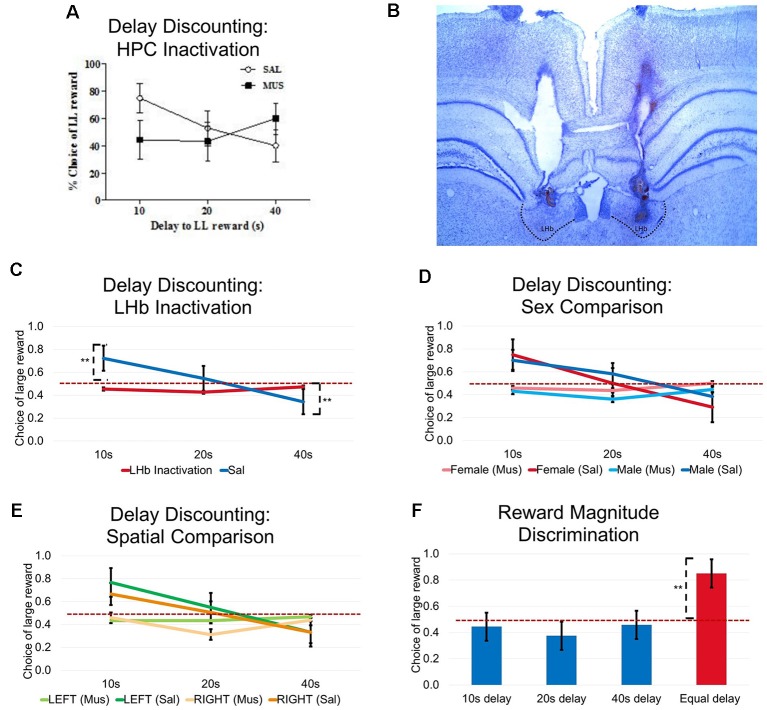Figure 6.
Experiment 3: Bilateral LHb inactivation resulted in impaired performance in delay-discounting task. (A) Bilateral HPC inactivation resulted in significantly impaired performance during the delay-discounting task. The figure shown was adapted from Davis et al. (2016). (B) Histological illustration of cannula placements in the LHb. (C) Bilateral LHb inactivation resulted in a significant impairment in delay-discounting task. There was a significant interaction effect (F(2,16) = 34.725, P < 0.01), no drug effect (F(1,8) = 3.510, p = 0.098, ns.), and a significant delay effect (F(2,16) = 15.561, p < 0.01). (D) Impairments were not due to sex differences. No interaction effect was observed after muscimol infusion (F(2,14) = 0.206, p = 0.816, ns.), and no significant effect of sex was observed (F(1,7) = 0.012, p = 0.916, ns.). No interaction effects were observed under saline infusion (F(2,14) = 0.371, p = 0.697, ns.) nor was there a significant sex effect (F(1,7) = 0.177, p = 0.687, ns.). (E) Impairments were not due to a spatial bias toward one or the other reward locatinos. No interaction effect was found after muscimol infusion (F(2,14) = 0.127, p = 0.882, ns.) and and there was no effect of reward location (F(1,7) = 0.057, p = 0.819, ns.). No interaction effects were seem after saline infusion (F(2,14) = 2.268, p = 0.140, ns.) and there was no effect of reward location (F(1,7) = 2.356, p = 0.169, ns.). (F) Intact reward magnitude discrimination was observed after LHb inactivation. Given a consistent delay for either small or large reward choices, animals preferred locations associated with a larger reward, paired sample t-test (t = 10.513, p < 0.01). **p < 0.01. ns = not significant.

